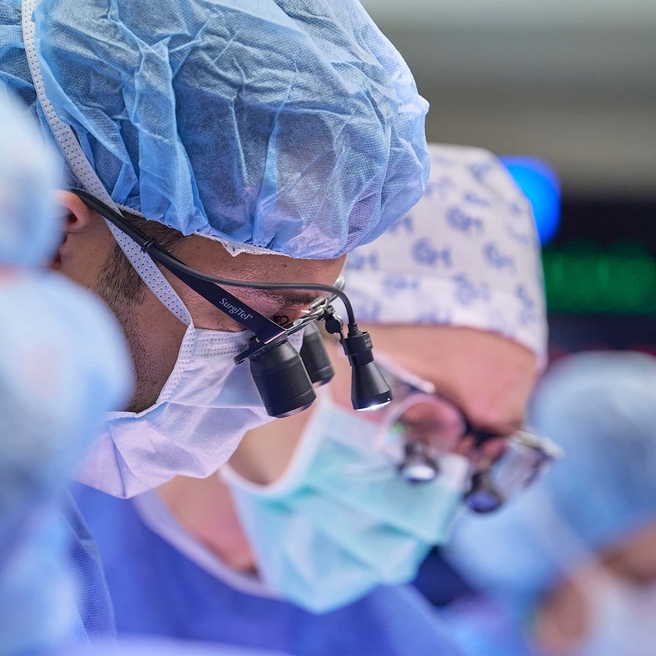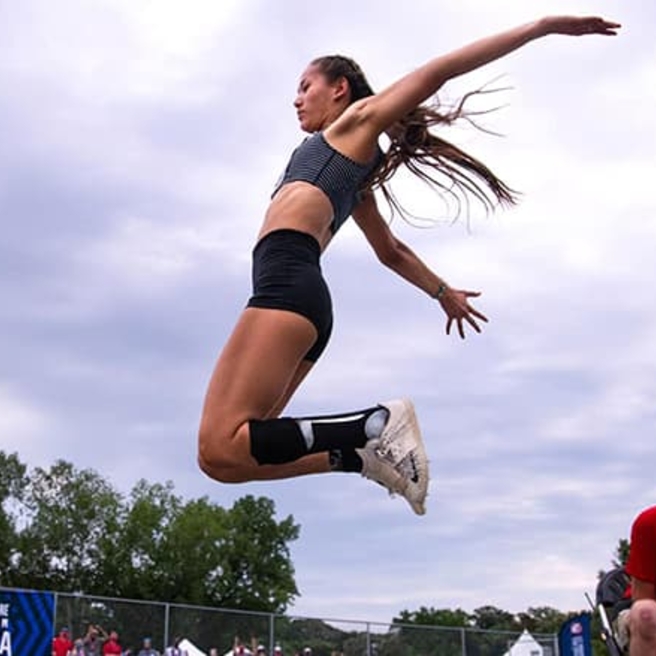What is idiopathic scoliosis?
Idiopathic scoliosis is the most common spinal deformity in the world.
Like other forms of scoliosis, idiopathic scoliosis affects the curvature of the spine. Instead of a straight line down the middle of the back, a spine with scoliosis curves and sometimes looks more like the letter “S” or “C,” rather than a straight “I.” The spine also can be rotated or twisted, pulling ribs along to form a multidimensional curve. Scoliosis is an actual deformity of the spine and should not be confused with poor posture.
Idiopathic scoliosis usually occurs in adolescents 10 to 18 years of age, but can occur in younger children, and is more likely to progress in girls. If a baby or young child (less than 8 years old) is diagnosed with idiopathic scoliosis, it is generally classified as infant scoliosis or juvenile scoliosis, both forms of early-onset scoliosis.
Causes of idiopathic scoliosis
Unlike other forms of scoliosis that have a known or defined cause, the origins of idiopathic scoliosis remain largely a mystery.
Is idiopathic scoliosis genetic?
Through much research — including work done at Children's Hospital of Philadelphia (CHOP) — we have discovered idiopathic scoliosis has a genetic component. But continued research is needed to identify the specific genes and genetic markers for idiopathic scoliosis, a condition that affects as many as 3 in every 100 Americans.
Clinicians at CHOP are actively researching a range of spinal deformities. Physicians and staff in CHOP's Orthopedic Center are actively involved in more than 100 orthopedic research projects — the many of which address some aspect of the diagnosis or treatment of scoliosis.
Orthopedic doctors regularly collaborate with the Center for Applied Genomics at CHOP, one of the world's largest genetics research programs and the only center at a pediatric hospital to have large-scale access to state-of-the-art throughput genotyping technology. Research at CHOP, led by Struan Grant, PhD, associate director of the Center for Applied Genomics, identified a gene mutation as a potential cause of idiopathic scoliosis. The research won a Hibbs Award from the Scoliosis Research Society, an international organization dedicated to the education, research and treatment of spinal deformities.
With research, orthopedic leaders at CHOP hope to be able to predict spine conditions and treat them before many of the symptoms begin.
Signs and symptoms of idiopathic scoliosis
Mild idiopathic scoliosis does not cause any symptoms. Parents and children may primarily be concerned about the cosmetic appearance of the back.
The most common symptoms of idiopathic scoliosis are:
- Difference in shoulder height
- Head is not centered with the rest of the body
- Difference in hip height or position
- Difference in shoulder blade height or position
- Tilted pelvis
- When standing straight, a difference in the way the arms hang beside the body
- When bending forward, the sides of the back differ in height
- Clothing does not hang straight
Mild or moderate scoliosis is not painful. Most back pain in children and teens is muscular. Sources of pain will be assessed at your child’s initial scoliosis evaluation.
Testing and diagnosis of idiopathic scoliosis
Early detection of idiopathic scoliosis is important for successful treatment of spinal curves. At Children's Hospital of Philadelphia, a trained pediatric orthopedic physician will perform a complete medical history, a physical examination and a visual evaluation of the curvature of your child's spine.
Imaging tests take a closer look at your child's spine to see if there are any problems with the bones and to measure what degree of curvature is present.
X-rays are one of the primary diagnostic tools for idiopathic scoliosis and show the precise angles of curvature in two-dimensional pictures.
The EOS Imaging System is another diagnostic tool available at CHOP. EOS is a low-dose, 3-D imaging system that scans your child standing up. It uses a fraction of the radiation dose that a general radiography X-ray uses, which is especially beneficial for patients with scoliosis that may require frequent imaging. CHOP was the first institution in the U.S. to introduce “EOS micro-dose” for use in scoliosis follow up. Micro-dose uses one-third of the standard EOS radiation dose.
An EOS scan shows us your child's natural, weight-bearing posture and allows us to see the interaction between the joints and the rest of the musculoskeletal system, particularly the spine, hips and legs.
If the curve pattern is not typical or if there is something unusual on the X-ray, a physician may order one or more of the following tests to provide more details:
- Magnetic resonance imaging (MRI), which uses a combination of large magnets, radiofrequencies and a computer to produce detailed images of organs and structures within your child's body. An MRI does not expose your child to radiation.
- Computed tomography (CT) scan, which uses a combination of X-rays and computer technology to produce cross-sectional images ("slices") of the body. CT scans are helpful in detecting ribcage problems.
About the diagnosis
10 facts about scoliosis
A scoliosis diagnosis can leave parents with a lot of questions. Learn essential scoliosis facts parents and caregivers should know about this common, treatable condition.
Treatments for idiopathic scoliosis
At CHOP, we practice collaborative, family-centered care. A team of expert clinicians — including leading orthopedic physicians and surgeons, pediatric nurses, physical and occupational therapists, and other specialists — will partner with you in the care of your child.
Every spine condition is different, so treatment is determined on a case-by-case basis. In planning your child's individual treatment, our team of specialists will consider the severity of the curve, where it occurs in the spine, and your child's age and stage of growth.
Non-surgical scoliosis interventions
Many patients with mild idiopathic scoliosis do well without surgery and may only need to be regularly monitored by a physician to make sure the curve doesn't worsen. Monitoring may include regular observation, X-rays and lab tests.
For a child with a spinal curve less than 25 degrees, ongoing monitoring by a pediatric orthopedist is generally recommended. If doctors document the child's spinal curves are worsening, back bracing may be recommended.
Back braces are the first line of defense against a child's worsening spinal curves caused by idiopathic scoliosis. When properly made and worn as instructed, a brace can hold the curve in a (partially) corrected position, preventing progression of the deformity. Recent powerful studies, including the NIH-funded BrAIST trial conducted at CHOP and other major scoliosis centers, proved that braces are very successful in halting the progression of scoliosis.
Braces are generally used for spinal curves between 25 and 40 degrees in children with significant growth remaining; in rare circumstances, bracing is used in larger or smaller curves. When scoliosis exceeds 45-50 degrees, surgical correction is usually necessary.
Surgical interventions
There are several surgical options to correct idiopathic scoliosis. Doctors will evaluate your child and determine which surgery is right for your child based on your child’s long-term health needs, his age, his skeletal maturity, and several other medical considerations.
Spinal fusion
If your child is in the final 2-3 years of growth or has finished growing, spinal fusion surgery may be recommended to correct the deformity as much as possible. This surgery permanently stabilizes your child's spine.
In this procedure, the abnormal curved spinal bones may be realigned and fused together. Metal implants are also inserted to correct the curvature.
Growing rods
For children who have many years of growth remaining, a growth-friendly option is preferred.
In growing rod surgery, the curve in your child's back is spanned by one or two rods under the skin to avoid damaging the growth tissue of the spine. The rods are attached to your child’s spine and vertebrae above and below the curve. The growing rods help guide spinal growth and drive the spine straight.
As your child grows, he will return to the Hospital every six months for outpatient surgery to have the growing rods expanded. This approach minimizes the spinal deformity, maximizes spine growth and allows continued lung development as your child grows.
Our surgeons have pioneered the use of magnetically adjustable growing rods. These rods can be adjusted in the doctor’s office without the need for a surgery or general anesthesia. This technology has greatly reduced the number of surgeries growing rod patients require
Vertebral body tethering
Our surgeons were among the first to perform vertebral tethering surgery, which was recently approved by the FDA. Learn more about this innovative new surgical treatment.
VEPTR
If your child is still growing and the spinal curve is affecting rib and lung development, your child may also be diagnosed with thoracic insufficiency syndrome.
If this is the case, an innovative surgical device called vertical expandable prosthetic titanium ribs (VEPTR) may be recommended by your child's orthopedic physician. VEPTR stabilizes the curved spine and allows your child’s ribs, spine and lungs to expand and grow.
Like growing rods, VEPTR is surgically adjusted as your child ages and reaches full skeletal maturity.
Safety in spine surgery
Surgery can dramatically improve the long-term outcomes for your child with idiopathic scoliosis, but it can also be a stressful experience for you and your child.
At CHOP, we offer a wealth of resources that can help you and your child prepare for surgery.
Additionally, we follow many best practices before, during and after surgery to decrease the risk of infection and increase positive outcomes. Our safety protocols have been so successful that they have been adopted by many other institutions. Some safety protocols our orthopedic surgical team uses include:
- A strict perioperative antibiotic protocol
- The use of cutting-edge navigation and imaging equipment during surgery, such as StealthStation® and O-arm® Surgical Imaging
- Continuous monitoring of anesthesia during surgery, including specialized spinal cord monitoring
- Postoperative clinical pathways to ensure quality and standardization of care processes, and rapid post-operative recovery
To learn more, read how we make safety in surgery a top priority.
Follow-up care
If bracing is required as treatment for idiopathic scoliosis, your child will be re-evaluated every six months until your child's condition is stable. If bracing is recommended as a temporary treatment leading up to spinal surgery, your child will be evaluated regularly before and after surgery until your child's condition is stable. After your child's spine is stabilized, annual visits to an orthopedic healthcare provider are recommended.
If your child received growing rods or VEPTR surgery, an additional procedure — spinal fusion — may be necessary when your child has finished growing.
For children who received vertebral body tethering, in most cases the screws and cable used will not need to be removed or adjusted.
At Children's Hospital of Philadelphia, we offer a wealth of ongoing support and services for your child and family at our Main Campus and throughout our CHOP Care Network. Our team is committed to partnering with you to provide the most current, comprehensive and specialized care possible for your child.
We recognize your child's pediatrician as an important part of the clinical team and provide regular updates on your child's progress. If continued care and monitoring is necessary long-term, we will help transition your child's care to an adult orthopedic team.
Outlook for children with idiopathic scoliosis
Almost all children with surgically corrected idiopathic scoliosis do well and lead active, healthy lives. With a few exceptions, children can return to sports. Scoliosis surgery does not affect the ability to choose a career with high physical demands nor does it affect childbearing in adulthood. When clothed, most children with idiopathic scoliosis show no visible signs or symptoms of scoliosis five years after surgery.

Why choose CHOP
By sharing our surgical knowledge, clinical experience and innovative research, our program offers a depth and breadth of experience treating spine conditions that is unparalleled in the region.
Resources to help
Idiopathic scoliosis Resources
Spine Program Resources
We have created video, audio and web resources to help you find answers to your questions and feel confident with the care you are providing your child.
Reviewed by Patrick J. Cahill, MD, John M. Flynn, MD


